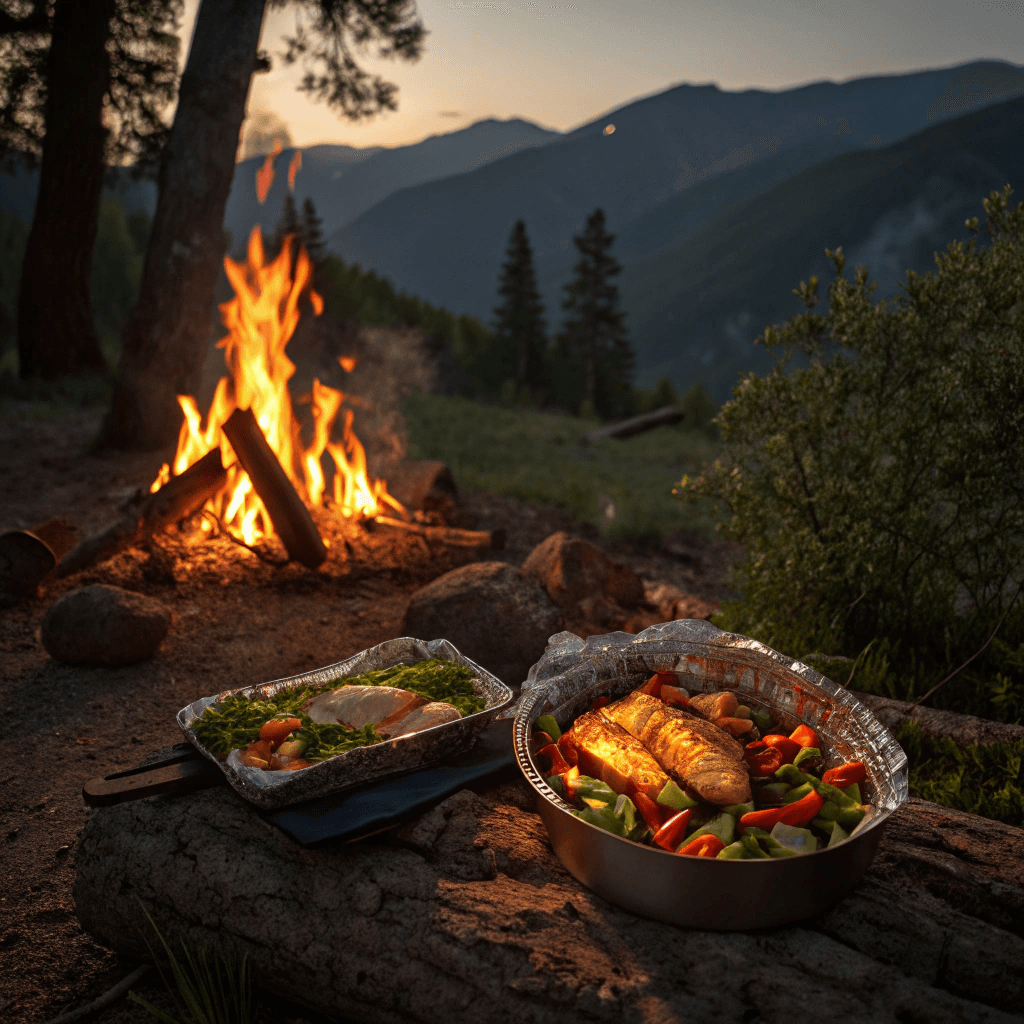If you’re planning to go camping dinner ideas choosing the right meals prepared will help make a difference. If you’re cooking on an open flame, making meals that don’t require heat or packing meals that don’t need the use of refrigeration.There are many recipes for meals at the campsite that are easy and tasty. This guide is comprehensive and includes recipes, but will also assist you to learn the art of outdoor cooking to ensure that your camping trip is as pleasant as it can be.
Furthermore, these suggestions can be adapted to different preferences and circumstances, making sure that you’re well-prepared regardless of your setting. You’ll be able to learn how to cook foil-packed meals on stove, make wraps and meals without the use of a stove and cook pasta recipes which don’t require refrigeration. The goal of this manual can help make your meal preparation easier with the goal of ensuring every bite will be satisfying.
Table of Contents
How to Make camping dinner ideas Step-by-Step
The ideas for a camping meal can range from the classic meals cooked over fire and innovative, no-cook meals which makes them ideal for all kinds of adventurous types. Furthermore, they permit the user to explore different flavors and methods while allowing for any dietary preferences or restrictions. So let’s look into the components, steps to prepare, and cooking methods that allow these suggestions to come to the table.
Ingredients for Various camping dinner ideas
For ensuring that the meals you prepare for camping taste delicious and effective, it’s essential to select the appropriate ingredients. Based on the type of meal you’re planning meals that are fire-based, non-fire-based or freezer-free meals. The items you’ll need will differ. The following are specific suggestions tailored to each technique, helping cook in the right way.
Fire-Based Dinner Essentials:
Food cooked over fire is the ultimate camping enjoyment. In addition to providing warmth and relaxation, but they allow you to cook delicious, hearty meals.
- Chicken breasts or the thighs (2-4 pieces, according to portions)
- Aluminum foil (for simple clean-up and even for cooking)
- Cubes of potatoes (2 cups to make a rich base)
- vegetables like bell peppers, onions and zucchini (3 cups chopped)
- Olive oil (2 Tbsp to add taste and moisture)
- Salt, pepper and various herbs (as necessary to increase the flavor)
Fire-Free Dinner Essentials:
The meals that don’t require fire are particularly beneficial in situations where open flames aren’t an choice. The meals are prepared in a short time and can be ideal for light transport.
- Chicken rotisserie that has been cooked (1 whole, shred)
- Tortillas (6 pieces, huge and soft)
- Salad mix that is ready-to-eat (2 cups of freshness)
- Chickpeas or canned beans (1 can that has been drained and washed)
- Avocado and lime (1 each, both for flavour and creamy)
Fridge-Free Dinner Essentials:
Free-of-fridge options are great to take on long trips, where refrigeration simply isn’t an option. Because of the shelf-stable components These meals aren’t just convenient, but also healthy.
- Cans of stews, soups or soups (2 cans, ready to eat)
- Noodles or pasta that can be stored in a shelf (200 grams as a base for filling)
- Dry fruit and dried nuts (1 cup for snacking or for toppings)
- Chicken or tuna vacuum sealed (2 packets packed with protein)
- Seasoning packets made of powder (as required for various flavors)
Also, think about packing additional items including olive oil packets tiny spice containers and food items that are not perishable. The small items you have can dramatically improve your food without adding extra weight.
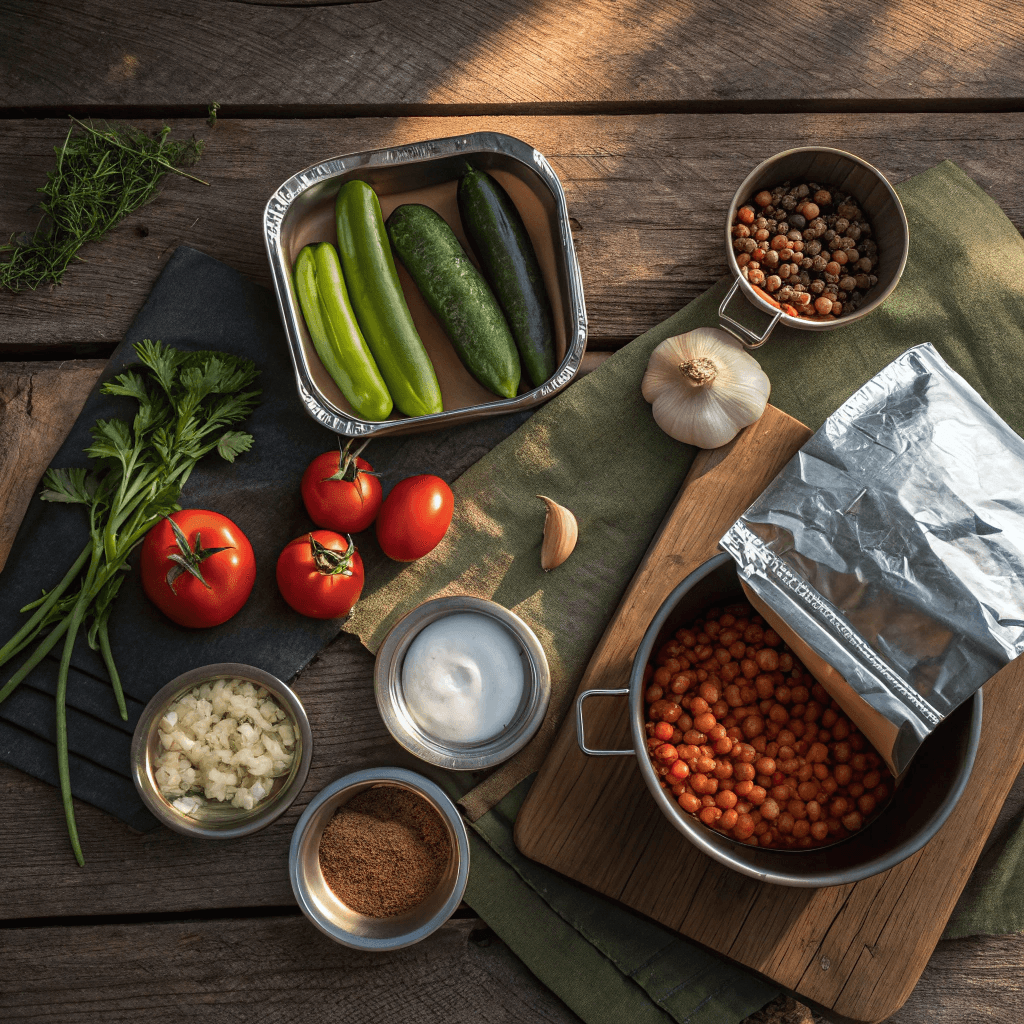
Preparation Steps
It’s important to prepare the success of camping meals. If you organize your food items and organizing your meals prior to time, you’ll be able to conserve the time and time while ensuring that each dinner is cooked perfectly. Use these tips for cooking the best fire-safe, fire-free and food that is free of fridges.
Fire-Based dinner ideas Preparation
- Organize the Ingredients:
Cut your veggies and chicken into equally size pieces. By doing this, you can ensure even cooking and will make the foil packets easy to put together. - Season Generously:
Put all the ingredients for chicken and vegetables into the large mixing bowl. Incorporate salt, olive oil pepper and the choice of spices or herbs. Mix until all ingredients are well covered. - Assemble Foil Packets:
Cut large pieces from aluminum foil and lay a piece of the mixture on each piece. The foil should be folded tightly in order to secure the packets to keep in the steam and the flavor while the cooking. - Prepare Your Fire:
Set up the campfire and allow it to burn until it is a stable flame that is glowing. Do not cook directly on fire, since this could create unbalanced cooking. - Cook the Packets:
Set the foil over the hot embers and allow them to cook for between 20 and 25 minutes. Rotate them regularly to ensure evenly distributed heat. Unlock one package carefully and determine if the chicken has been well-cooked and vegetables are cooked to your liking.
Fire-Free dinner ideas Preparation
- Lay Out Ingredients:
Create your work space by putting together tortillas, chicken that has been cooked mixed salad, can beans slices of avocado, and lime wedges. - Build Your Wraps:
Begin by putting an even layer of beans over the tortilla. Follow that with the chicken and salad. Include a splash of lime juice and some avocado slices to add more flavour. - Roll and Slice:
The tortilla is then tightly rolled before cutting the tortilla into thirds or halves so that it is easy to manipulate. Wraps are delicious right away or stored for later consumption.
“Looking for easy and tasty wrap ideas to your next camping trip? Check out this Chick-fil-A Cool Wrap Recipe to make a quick and tasty no-cook meal.”
Fridge-Free Dinner Preparation
- Boil Shelf-Stable Pasta:
Make sure to boil water in your pot that can be used as a portable stove or camping kettle. When it is boiling you can add pasta and cook as per the instructions on the packet. - Prepare the Stew:
When the pasta is cooked make the stew or soup that you can make in a separate pan. Mix it up regularly to avoid sticking. - Combine and Serve:
Rinse the pasta and add it to stew or soup for food that can be cooked in one pot. This will reduce the need for the cleanup and provides a nutritious meal.
“Discover new, more nourishing and delicious options by using these Ground Sausage Dinner Recipes Perfect for evening of camping.”
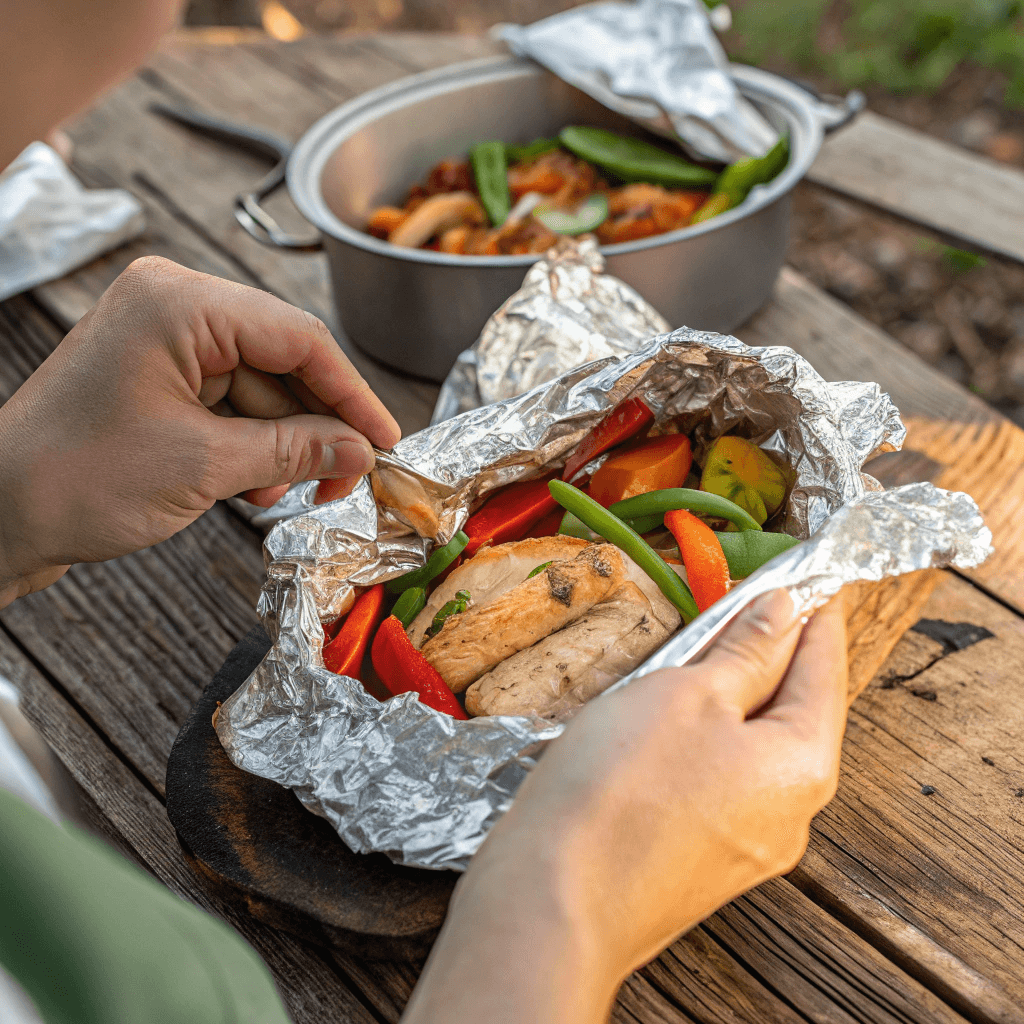
Cooking Instructions
Whether cooking your meals over an open flame, using an electric stove that you can carry around, or making meals that don’t require cooking every method has distinct aspects to consider. Make sure to follow these suggestions to ensure that your food is prepared correctly each time.
Fire-Based Cooking Tips
- Make use of long-handled tools such as tongs and spatulas for handling food in a safe manner.
- It is important to rotate objects such as foil packs or skewers regularly to prevent burning.
- A spray bottle of water close by to help manage flare-ups.
Fire-Free Assembly Tips
- Combine ingredients with care to achieve well-balanced flavor profiles. By placing citrus fruits like tomatoes and limes among other ingredients can avoid soggyness.
- Place individual portions of food into airtight containers for preserving the freshness.
Fridge-Free Heating Tips
- Make sure to transfer cans of food items into an oven before heating them for a uniform warmth.
- Seasoning packets can add flavor to dishes that are simple for example, crushed garlic powder or dried herbs.
With these tips it is easy to adapt the ideas for your camp meals to fit any setting. If you’re looking for more inspiration look up the most basic camp recipes and explore food options that don’t require fire for a wider range of options.
Be sure to check back to the next section of this post, in which we’ll go over the pros and cons as well as meal options and the numerous advantages of eating out in the wilderness.
Final Cooking Process
In order to achieve the perfect result getting the perfect results, knowing the intricacies of every cooking technique is crucial. When grilling with an open flame or making recipes that don’t require cooking, focusing on the smallest details is essential.
Fire-Based Cooking
- Monitor the Heat:
Be sure to ensure that your fire is on the proper temperature. Instead of using flames, work best to cook evenly. Flamming can cause food items to catch fire in the exterior while being sub-cooked within. - Adjust for Consistency:
Make sure to check the pots and packets often to ensure that they cook evenly. Utilize long-handled kitchen tools to avoid burning. Turn skewers and foil packets for a consistent distribution of heat. - Finish Strong:
Once the food is almost done Add a few fresh herbs or sprinkle of olive oil to give it an more the flavor. Also, allow the food to sit for a couple of minutes following the removal of it from the flame. It allows the juices to disperse and ensure that the food is tender.
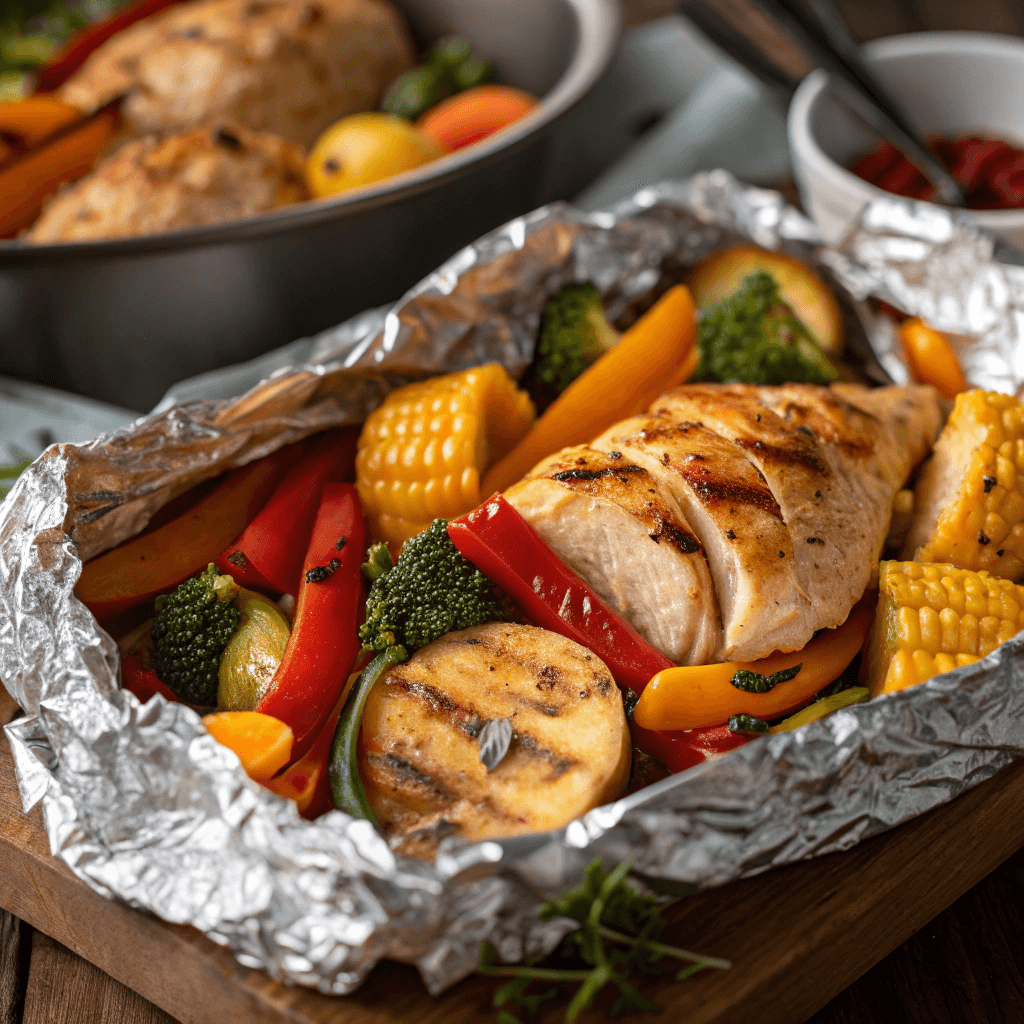
Fire-Free Meal Assembly
To avoid fire The process is based on layers and assembly, not cooking. Be mindful of the balance and the right flavor combination.
- Layer Thoughtfully:
Lay out the ingredients in a fashion which prevents the formation of soggy. As an example, you should keep moist ingredients like beans and avocados far away from tortilla edges for a more stable tortilla. - Seal and Pack:
Make use of foil or parchment to cover the final product in a secure manner. This helps ensure that the product is fresh and helps to prevent messes during transport.
“Add a fresh new twist to the camping menu by following this simple Mexican Chicken Salad recipe , ideal for a fire-free dinner option.”
Fridge-Free Cooking
With no refrigeration, imagination becomes the best instrument. Concentrate on mixing shelf-stable items to create a dish that resembles the fresh taste.
- Add spice to the mix:
Mix spices such as garlic powder and smoked, and dried basil into small containers. They can turn simple canned foods into gourmet dishes. - Combine Textures:
Give a crunch to your soft meals by adding dried fruits or nuts. You can, for instance, garnish an already canned stew with a few handfuls of granola for extra flavor and flavour.
Garnishing and Plating
While camping food is often informal, taking time to decorate and place your food on plates will add some class for your dining out outdoors.
- Garnishing:
Make use of fresh, natural herbs such as parsley or cilantro whenever you can. Sprinkle on spices, or drizzle a bit of olive oil to give it an elegant touch. - Plating:
Food is served on lightweight dishes or bowls for camping dinner ideas that are clean and easy to clean. Furthermore, using biodegradable plates and napkins will ensure a sustainable way of life.
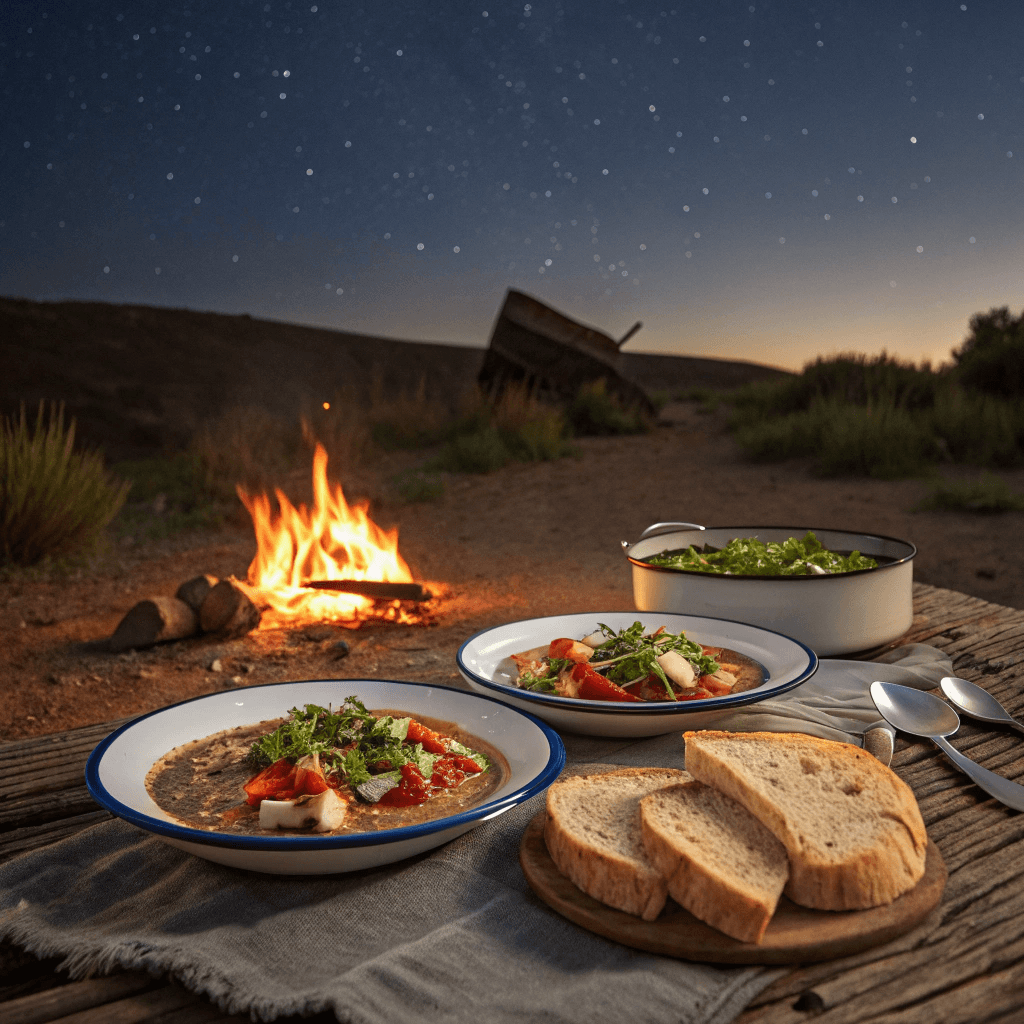
Pro Tips & Variations
Ideas for camping dinners can be as flexible as they are tasty. By making a few minor adjustments it is possible to adapt the recipes to meet different preferences as well as dietary preferences and the cooking equipment. These are the top tips and innovative ways to spice up your food.
Tips for Fire-Based Meals
- Use Pre-Cut Ingredients:
Cut vegetables in advance and marinated meats can save time and make it easier to prepare on the camping site. - Choose the Right Tools:
Cast iron cookware is great to cook over fire since they keep the heat and spread it out equally.
Fire-Free Meal Ideas
- Hummus and Veggie Wraps:
You can substitute hummus in place of chicken to make vegetable alternatives. You can also add cucumber and carrots to add a little crunch. - Tuna Salad Wraps:
Mix canned tuna and mayonnaise or mustard and mayonnaise, mustard and pickle relish. Sprinkle on tortillas and lettuce to make a fast and protein-rich meal.
Fridge-Free Variations
- Pasta Salad:
Mix cooked pasta and olive oil and canned olives sun-dried tomato, and the addition of a little parmesan cheese. - Soup and Crackers:
Serve soup that has been heated with shelvestable crackers to make a cozy dinner.
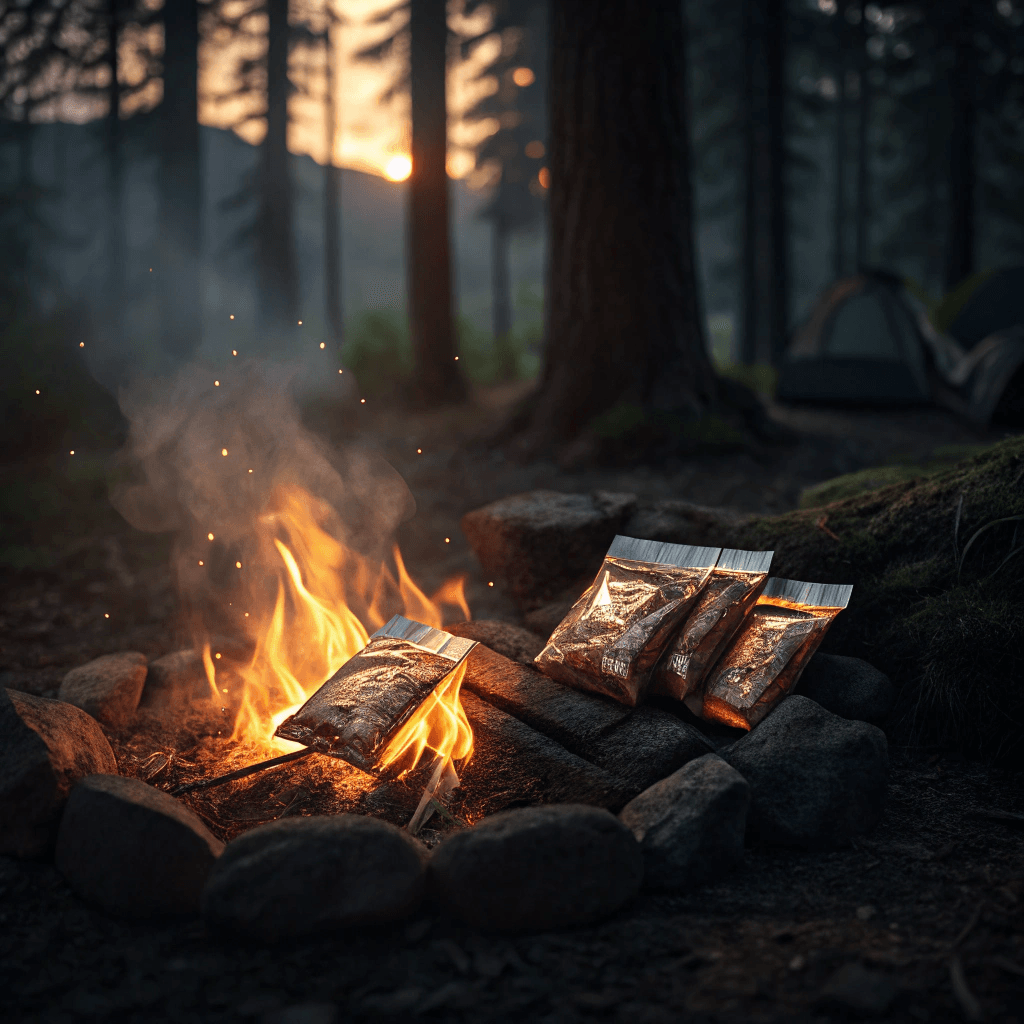
Benefits of Camping Dinner Ideas
Making thoughtful meals for camping dinner ideas has several benefits, which go far beyond just food. In this article, we look at the reasons why these suggestions make a significant aspect of the camping experience.
Enhance the Experience
Foods prepared outside often taste better when they’re served with the fresh air and an enjoyable companion. In addition, they provide satisfaction cooking from scratch.
Cost-Effective and Flexible
Camping meals are less expensive than packaged meals. Additionally, they permit you to customize your menu according to your personal preferences and your dietary requirements.
Convenient and Portable
A majority of camp-cooked meals are made with light and readily transportable food items. These are great for quick journeys and longer trips.
FAQs
What are some great camp food options?
A great camping dinner ideas meal is foil-pack dishes, stews in one pot, and grilling food items. You can, for instance, the foil-packing of chicken and vegetables, or a campfire chili.
What can you eat camp without a stove?
If you are camping with no fire choose meals that come in wraps, ready-to-eat salads or prepared items such as Rotisserie chicken. Additionally food items that can be canned and protein bars can be excellent alternatives.
What kind of food is it possible to bring camping with no fridge?
To avoid the fridge, you can consider canned soups, vacuum sealed meats and dried fruit. Powdered seasonings are another option to improve these pantry staples.
What is the best food you can buy to camp?
In the event of a camping excursion take a mix of proteins, carbohydrates, and snacks. Take pasta for instance as well as canned beans, fresh veggies, and bar snacks for energy.
Conclusion
The camping dinner ideas meal suggestions not only feed your cravings but they also enrich the enjoyment of your outdoors. If you plan for the future and using these ideas to ensure that every dinner is tasty and easy to prepare. Be sure to try different recipes, and adapt them to your personal preferences and have fun with this process. The next time you go camping has gotten a whole lot better!
